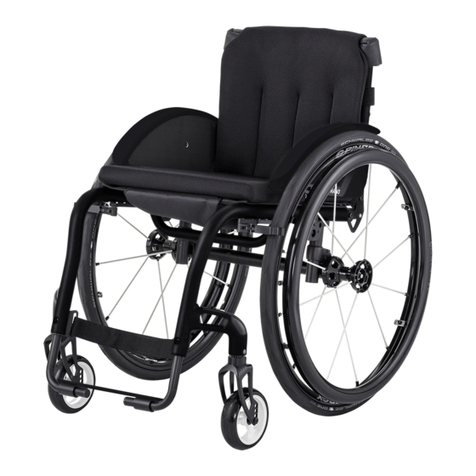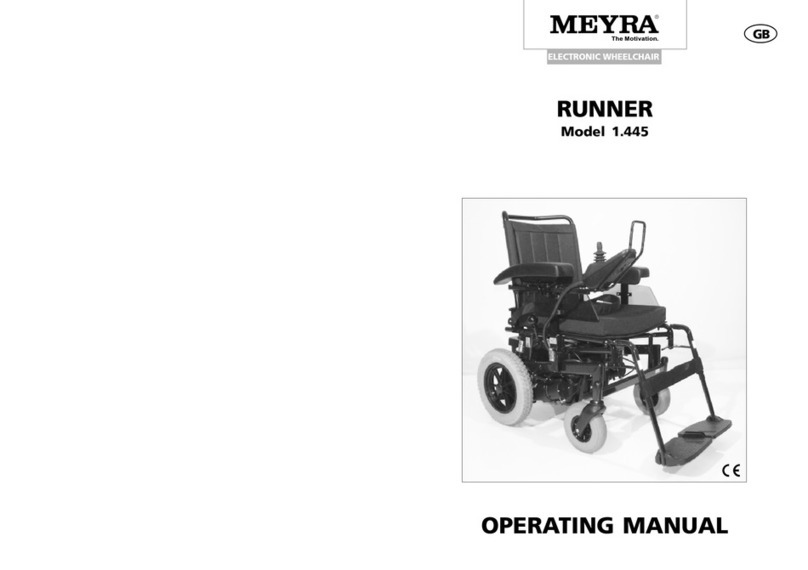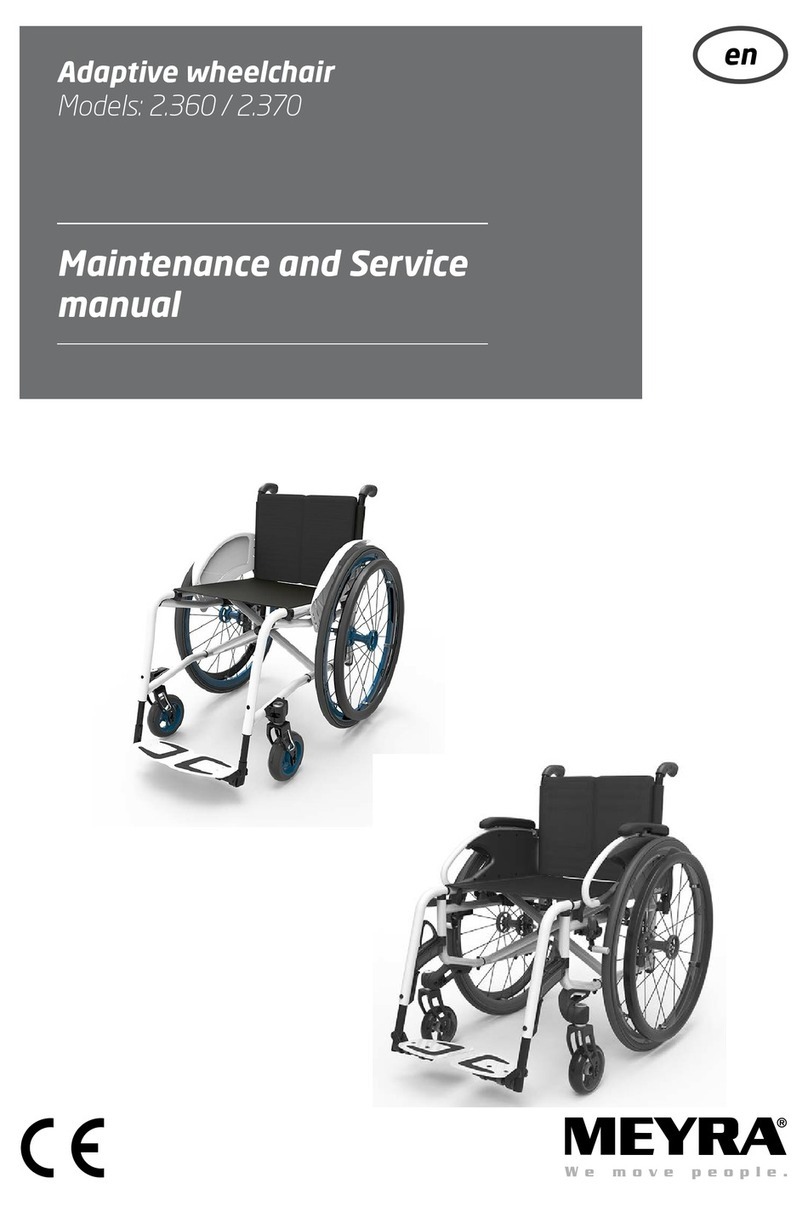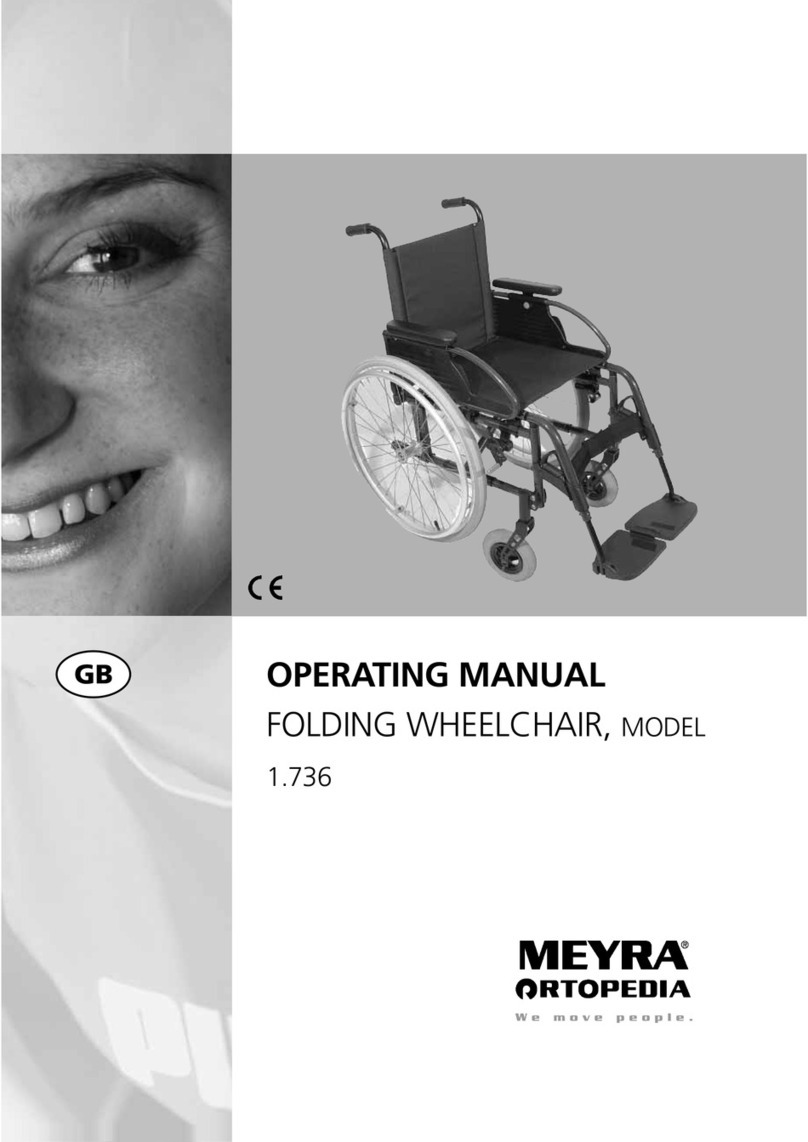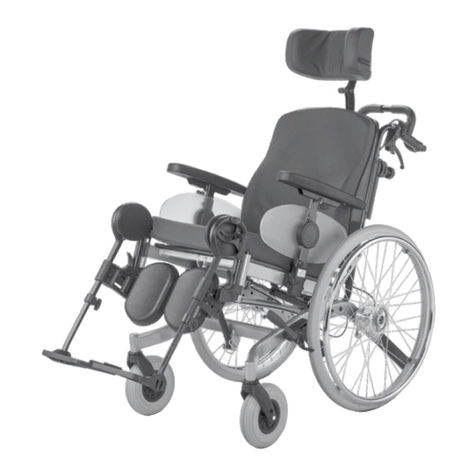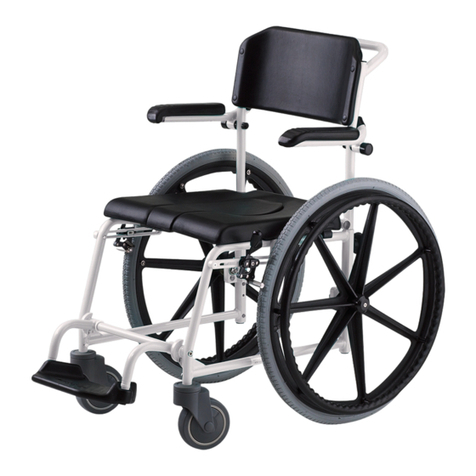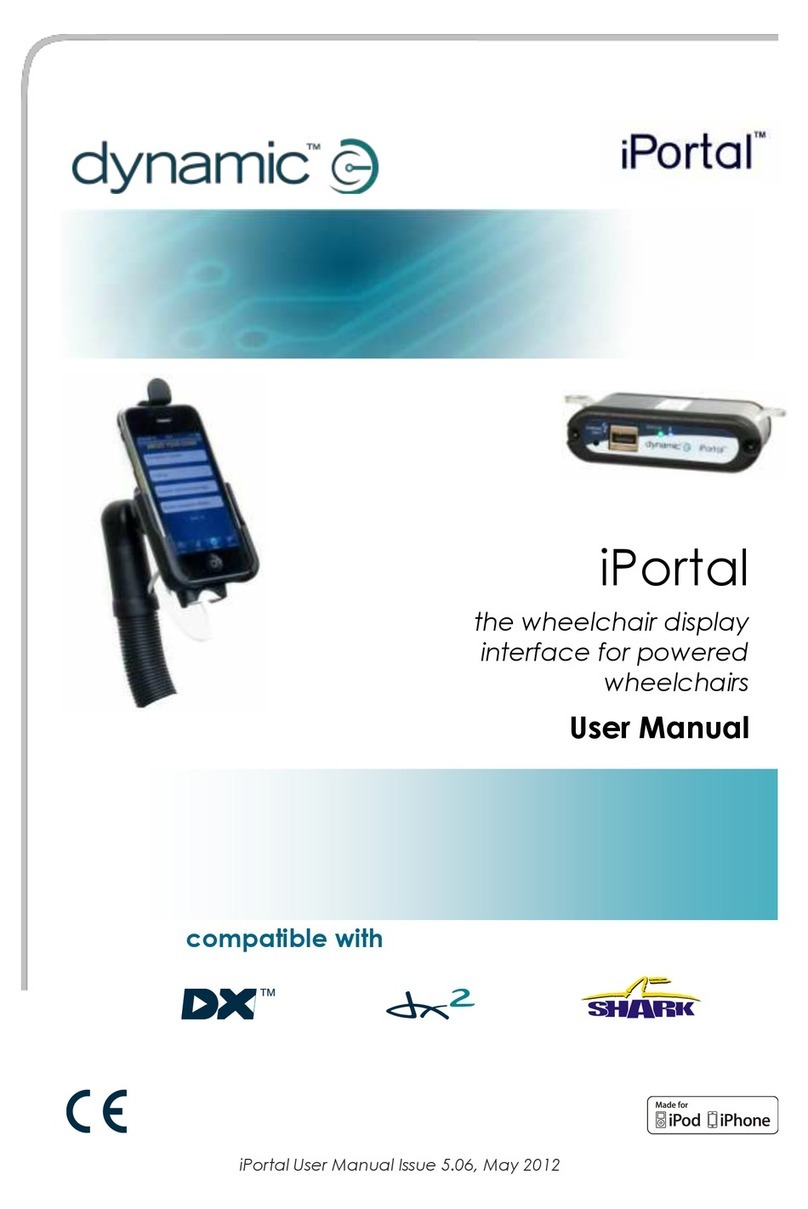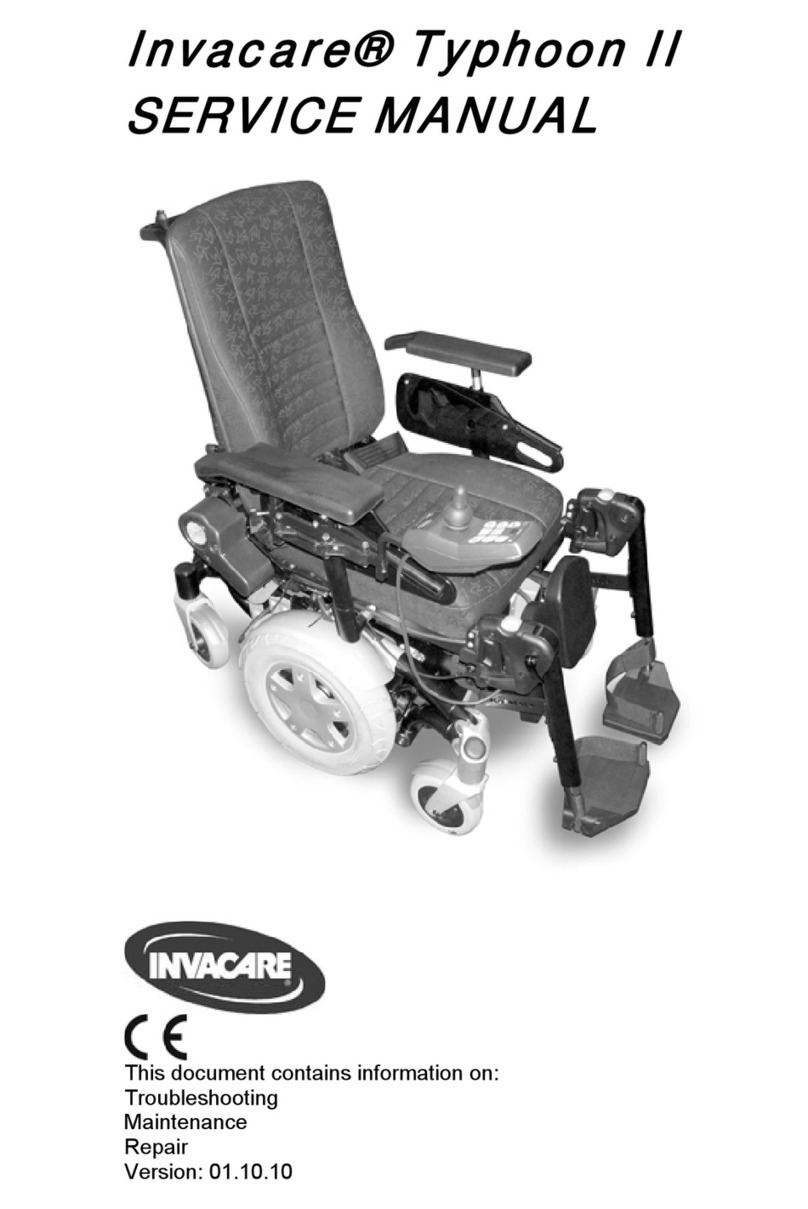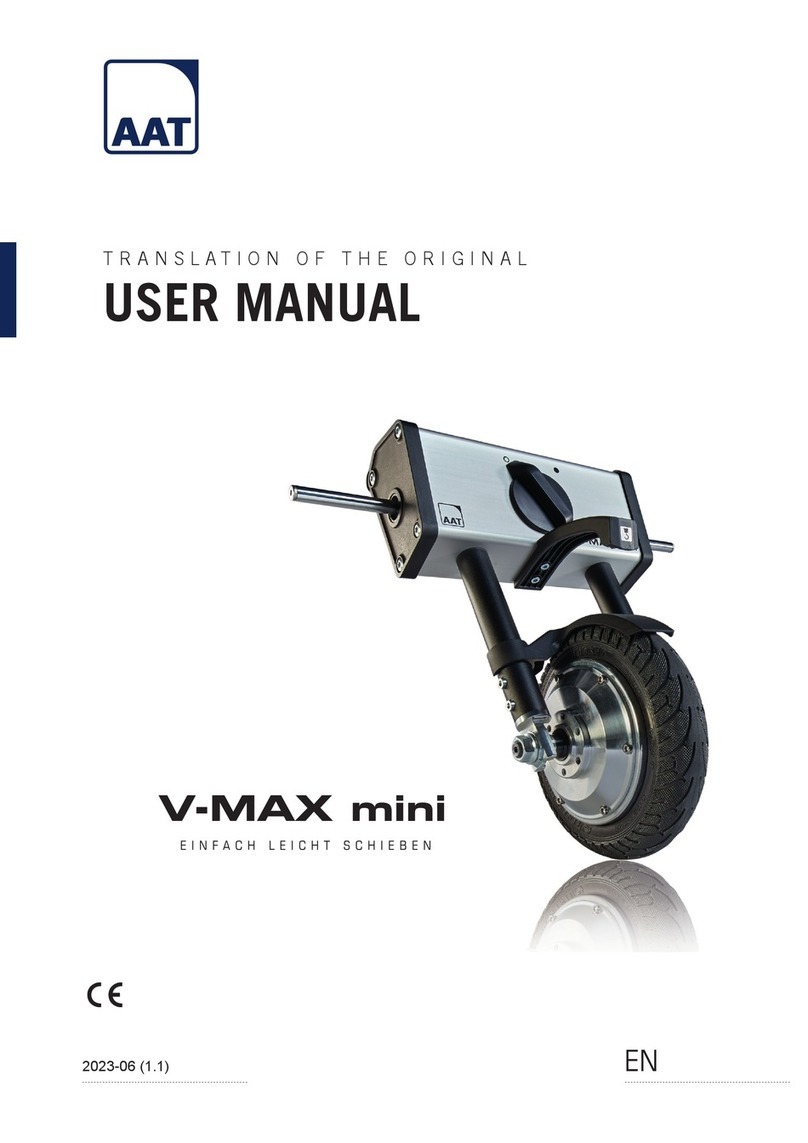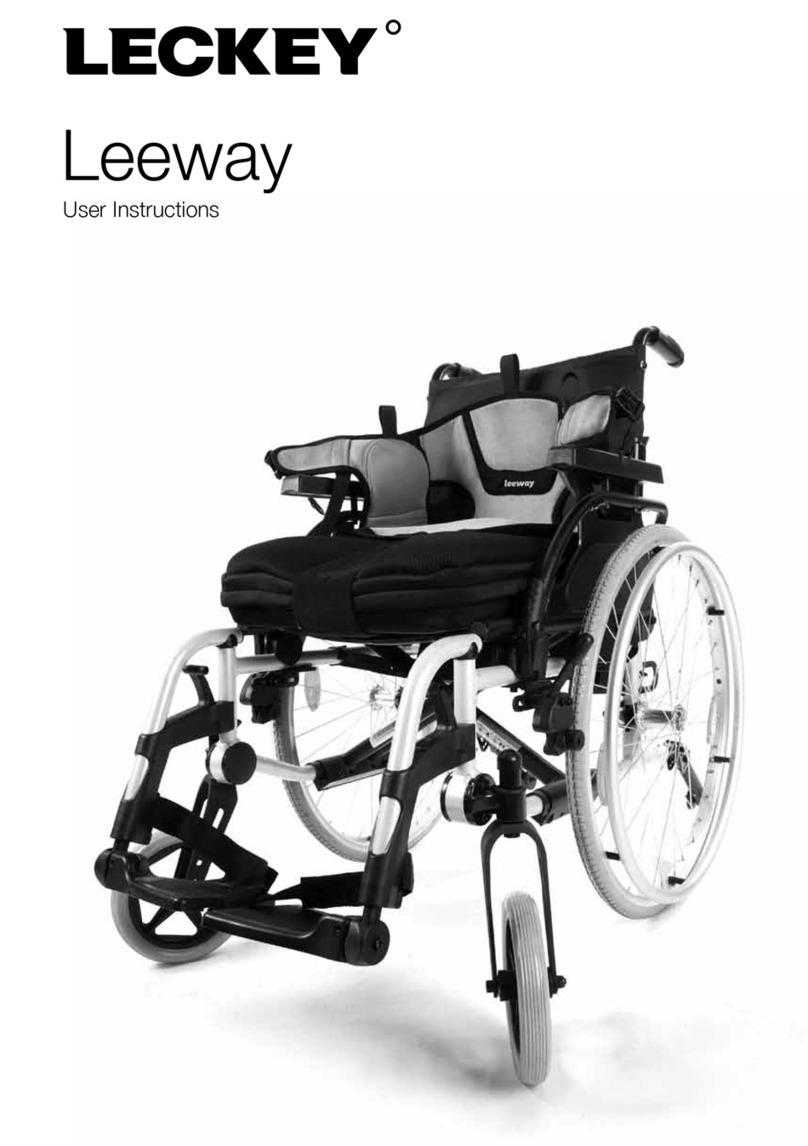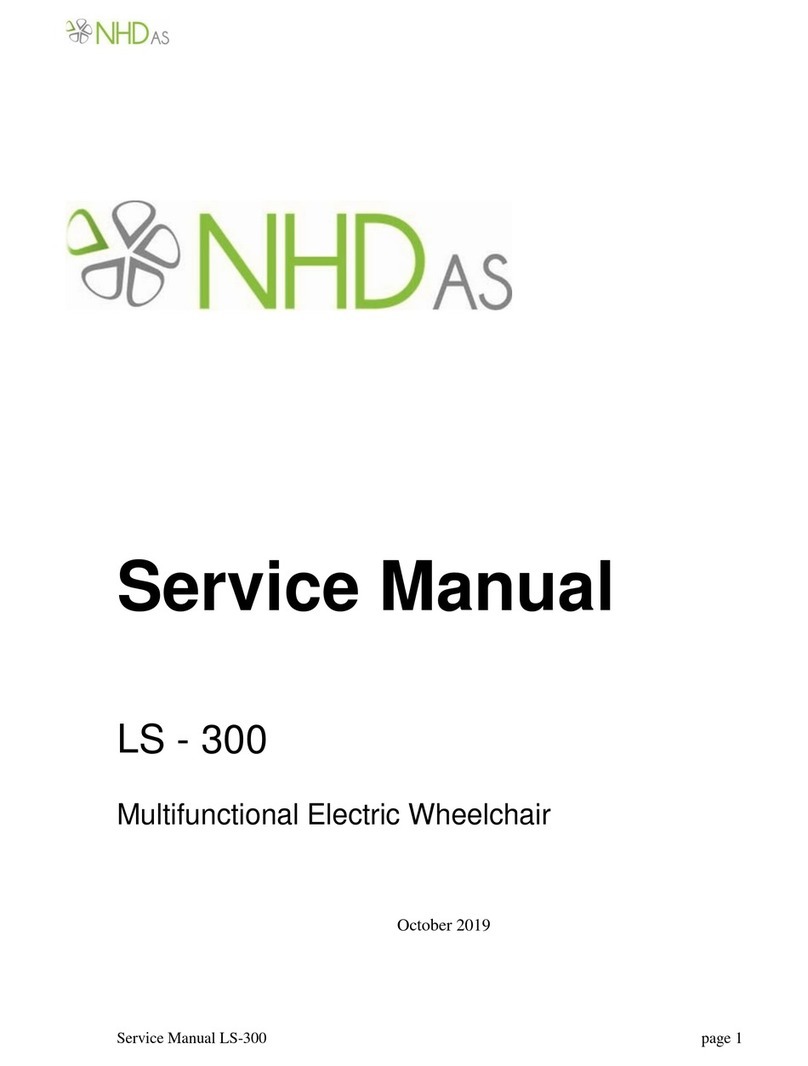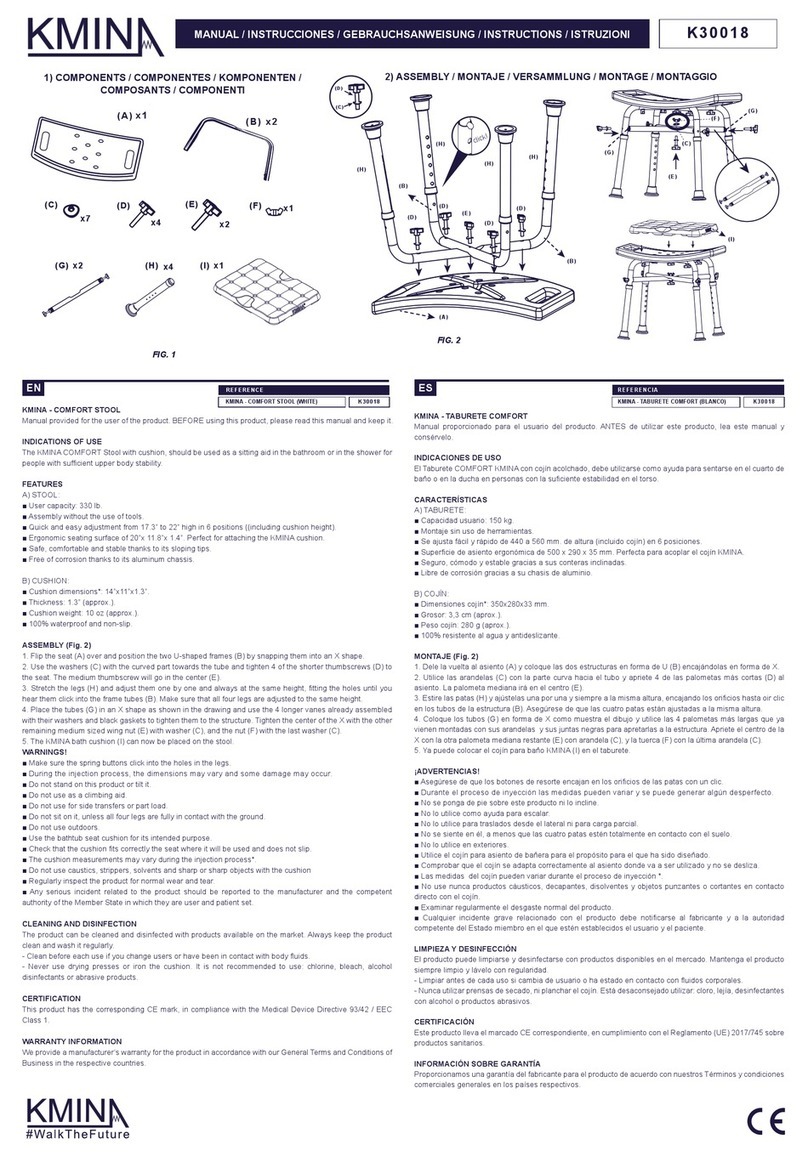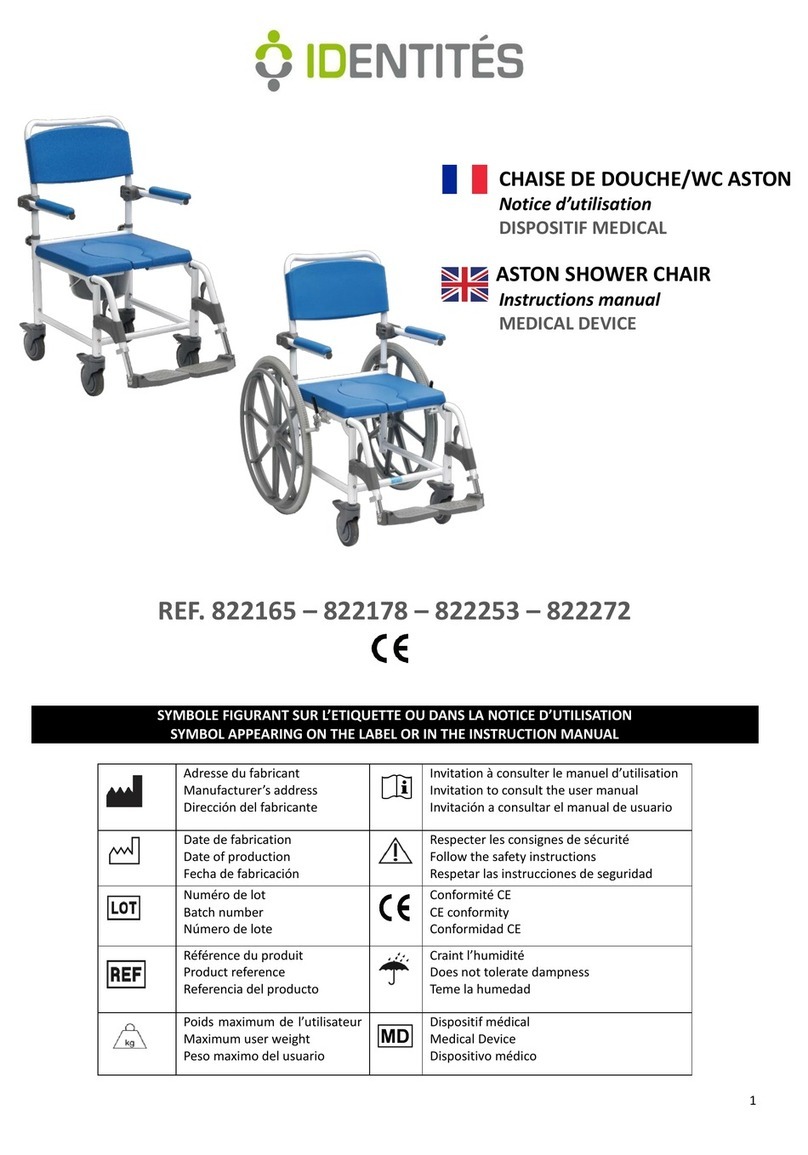Meyra iChair DYNAMIC 1.623 Manual

Maintenance and Service manual
Electric wheelchair
Model: 1.623 iChair DYNAMIC
en

2

3
Contents
General 7
Foreword 7
Meaning of the applied markers 7
Requirements concerning workshop personnel 7
Customer support 7
Information to maintenance and service work: 8
Working on the vehicle 8
Overview 9
Model 1.623 9
Vehicle identification 9
Service position 10
Setting the service position 10
Exit the service position 10
Swivelling down the seat unit 10
Removing the rear revetment 10
Safety information 11
Storage 11
Required tools and aids 11
Adaptation and adjustment jobs 12
Leg support 12
Mechanically adjustable leg support 12
Height adjustment of the footplate 12
Height adjustment of the calf plates 12
Depth adjustment of the calf plates 12
Angle adjustment of the footplate 13
Replacing the tension spring of the footplate 13
Depth adjustment of the leg support 13
Arm supports 14
Adjusting the height of the arm supports 14
Setting the memory-function 14
Locking the arm support 14
Positioning the arm support cushion 14
Back support, mechanically adjustable 15
Removing the back support upholstery 15
Placing the back support upholstery 15
Adjusting the back support cushion 15
Replacing the pneumatic spring 16
Removing the pneumatic spring 16
Mounting the pneumatic spring 16

4
Torso support 17
Adjusting the position of the torso support 17
Shoulder strap 17
Adjusting the height position of the shoulder strap clamps 17
Adjusting the distance of the shoulder strap clamps 17
Lap belt 17
Adjustment and assembly of the lap belt 17
Head support 18
Adjusting the head support cushion 18
Adjusting the depth of the head support 18
Adjusting the headrest height 18
Removing the head support 18
Removing the head support bracket 18
Seat 19
Remove the arm supports 19
Adjusting the seat depth 19
Adjusting the seat plate 19
Adjusting the seat depth 20
Adjusting the seat frame 20
Wheels 21
Wheel change 21
Disassembly of the wheels 21
Assembly of the wheels 21
Replacing the decorative applications 21
Changing the tyres 22
Disassembly of the tyres 22
Assembly of the tyres 22
Adjusting the castor stem 23
Support castors 23
Replacing new support castors 23
Fuses 24
Main fuse 24
Electronic security 24
Power module 24
Lighting- / adjustment module R-Net 24
Lighting 25
Headlight / front turn signal 25
Adjusting the headlights 25
Replacing the lighting fixture 26
Replacing the back light 26

5
Batteries 27
Removing the batteries 27
Positioning the batteries 27
Battery charger 28
Drive 29
Removing the drive 29
Mounting the drive 30
Carbon brushes 31
Removing the carbon brushes 31
Mounting the carbon brushes 31
Vehicle suspension 32
Suspension of the chassis 32
Seat suspension 32
Support suspension 32
Adjusting the seat suspension 33
Seat suspension, absorber (1) 33
Seat suspension, absorber (2) 33
Replacing the spring 34
Electronic modules 35
Power module 35
Programming the driving behaviour 35
Standard setting of the R-Net driving parameters 36
Power module, replacing the lighting, resp. lighting/adjustment module 37
Power module 37
Lighting- / adjustment module R-Net 38
Plug allocation of the lighting/adjustment module R-Net 38
Electrical adjustments 39
Seat height adjustment 39
Replacing the adjustment for seat height adjustment 39
Camber function 40
Replacing the adjustment motor for camber function 40
Error indication 41
Table Error indication 41
Conduct calibration 41
Functional checks 42
Checking the cable layout 42
Inspection during standstill 42
Inspection of the electric adjustments 42
Test drive 42
Braking distance 42

7
GENERAL
Foreword
This maintenance and service manual is intended
for the specialist dealer and describes all adapta-
tions and adjustments as well as the required ser-
vice, maintenance, repair and replacement jobs.
This maintenance and service manual is supple-
mented by the following documents:
– the model dependent operating manual
☞(an operating manual is supplied with
each vehicle),
– the model dependent operating manual
< Operating module >,
☞(an operating manual is supplied with
each vehicle),
– the safety and general handling instructions
< Electronic vehicles >,
– the model dependent spare parts list,
☞(the required spare parts list can be ob-
tained through the specialist dealer ac-
cess on our website).
All required documents as well as additional infor-
mation to our products are located on our website
under:
< www.meyra.com >.
Meaning of the applied markers
Safety instructions with a coloured background
are mandatory and need to be observed under
any circumstance!
☞This symbol indicates tips and recommenda-
tions.
[ ] Reference to a picture number.
( ) Reference to a function element within a pic-
ture.
Requirements concerning workshop
personnel
During all corresponding work there is always a
danger of jamming or skin abrasions!
Knowledge of this maintenance and service
manual as well as the supplementing documents
(view chapter Foreword on page 7) is man-
datory for the correct and safe execution of the
work required on the electric wheelchair.
Special knowledge is required to carry out the
maintenance and service work described in this
maintenance and service manual and may there-
fore only be carried out by educated qualified per-
sonnel.
☞We therefore offer vehicle specific courses that
provide the specialised personnel with the re-
quired qualification.
☞The document, especially the chapter Safety
information on page 11, must therefore be
read carefully and observed by all persons, that
are assigned to work on the electric wheelchair.
Customer support
Technical questions will gladly be answered by
your national Meyra distribution partner.

8
WORKING ON THE VEHICLE
☞For maintenance and repairs the vehicle is to
be switched off and secured against uninten-
tionally rolling away.
☞Additionally the main-/battery fuse is to be re-
moved.
☞Before working on electric parts, the plugged
connection from the battery cable to the pow-
er module might also need to be disconnect-
ed.
☞Before working on electric adjustment the cor-
responding plug of the connection cable is to
be pulled.
INFORMATION TO MAINTE-
NANCE AND SERVICE WORK:
☞Every electric wheelchair should undergo in-
spection once a year.
– The inspection increases the safety and ex-
tends the life span of the electric wheelchair.
☞For highly strained wheelchairs for example in
case of:
– extreme strain,
– user still growing,
– users with changing disease patterns,
it is recommended to have the electric wheel-
chair checked, maintained and if required ad-
justed semi-annually.
☞Only original Meyra spare parts are to be used
for all maintenance and service.
☞Before beginning with the service work check
the general condition of the electric wheel-
chair.
☞All screwed connections, if not otherwise not-
ed, tightened according to table Torque accord-
ing to DIN for screwed connections on page 46.
☞The maintenance schedule (Checklist) should
serve as a master for copying.
Maintenance schedules that have been filled
out are to be kept on file and a copy handed to
the customer!

9
VEHICLE IDENTIFICATION
For a definite vehicle identification in case you have ques-
tions, or for spare parts orders, the following data can be
read off of the type plate:
☞view sample-type plate [1]
1. The model description (in the field Type resp. Type).
2. The serial number (beside the field SN).
OVERVIEW
Model 1.623
1

10
SERVICE POSITION
Danger of jamming the fingers, hands and arms in case
of unintentional swivelling down of the seat unit possible.
☞After swivelling the seat unit up, ensure the engaging
of the locking bolt!
Danger of jamming the fingers, hands and arms is possi-
ble when lowering the seat unit into the regular driving
position.
The service position describes a vehicle with corresponding
seat position in order to enable e. g. unencumbered main-
tenance jobs.
Setting the service position
☞Before adjusting the service position, remove the leg
supports if necessary.
To adjust the service position, first remove the two attach-
ment screws (1), then swivel the seat unit up until the lock-
ing bolt (2) engages.
☞To lock the seat unit, the locking bolt must visibly and
audibly lock into place (2).
☞The locking device (2) is correctly engaged when:
– – the locking pin is has sprung out completely.
– – the handle plate lies directly on the hex housing.
– – the tension catch is screwed properly into the swivel
arm.
Exit the service position
Only grab under the front of the seat plate, resp. under the
seat frame tubes to swivel down the seat unit!
When lowering the seat do not grab under the suspen-
sion plate!
Danger of jamming when lowering the seat unit into the
normal driving position.
Swivelling down the seat unit
1. Hold the seat unit in position with one hand when
swivelling down the seat unit.
2. Pull the seat locking device (2) and slowly swivel the
seat unit down.
Removing the rear revetment
Remove the attachment screw (4) on both sides in order to
remove the rear revetment [3].
2
4
3
1

11
SAFETY INFORMATION
☞Wear suitable clothing during service-jobs as
well as gloves and protective glasses when re-
quired.
– Danger of injuries caused by inappropriate
work clothes.
☞Secure the product against unintentional roll-
ing motions, tilting over or falling down e. g.
from a mounting rack.
– Damages due to a not secured electric wheel-
chair.
☞Clean/disinfect the product before inspection.
☞If necessary observe the care instructions and
product specific inspection instructions in the
corresponding user manual.
– Damages due to neglected cleaning.
☞Keep your workspace clean and only use clean
cloths.
– Damages caused by shavings and dirt particles.
☞Use only suitable tools.
☞View chapter Required tools and aids on
p a g e 11.
Damages caused by the use of incorrect tools.
☞Replace loose screwed connections with
thread safety with the respective nut or screw
and new thread safety.
☞If new screws or nuts with thread safety not be
available, apply liquid thread safety compound
with medium hardness e. g. Loctite® 241 or
Euro Lock A24.20.
☞Damages caused by loose screwed connec-
tions.
Storage
Dismantled parts are to be placed resp. stored safe-
ly and protected as well as sorted by commission.
REQUIRED TOOLS AND AIDS
For adjustments and maintenance we recommend
the use of high quality tools.
☞High quality tools can prevent for example
damages to the surface of the frame as well as
minor injuries to the hand.
The tools required most frequently are:
– Socket wrench
– Open-end or ring spanner
– Hexagon socket spanner
– Phillips screwdriver
– Slot screw driver

12
ADAPTATION AND ADJUSTMENT
JOBS
The following chapters describe the fitting of the electric
wheelchair to the changing individual demands of the user.
LEG SUPPORT
It is to be observed that other functions on the electric
wheelchair are not impaired by the respective setting!
Mechanically adjustable leg support
Height adjustment of the footplate
1. Loosen the screws (2) for height adjustment of the foot-
plate (1).
2. Telescope the footplate (1) to the desired height and
then refasten the screw (2).
Height adjustment of the calf plates
1. Loosen the respective screws (3) of the calf plate brack-
et for height adjustment of the calf plate.
2. Slide the calf plate bracket to the desired height and
refasten the respective screw (3).
Depth adjustment of the calf plates
1. Remove the respective screw (4) to adjust the depth of
the calf plates.
2. Position the calf plate in the desired depth position and
remount to the calf plate bracket with the screw (4).
2
1
3
4

13
Angle adjustment of the footplate
1. For this loosen the screw (1) so far that it no longer
catches.
2. Disconnect the toothing of the footplate and adjust the
angle of the footplate.
3. Retighten the screw (1) of the footplate.
☞In doing so the teeth of the angle adjustment must
join again.
Replacing the tension spring of the footplate
1. To replace the tension spring (2) of a footplate, remove
the corresponding screw (3).
2. Unhook the tension spring (2) and replace it.
3. Hook the new tension spring (2) into place and re-
mount it with the attachment screw (3) underneath the
footplate.
Depth adjustment of the leg support
1. For depth adjustment of he leg support, remove the
screw (4) of the leg support receptacle (5).
2. Slide/push the leg support receptacle (5) to the desired
position.
3. After positioning the leg support receptacle (5) remove
the screw (4).
1
3
2
4
5

14
ARM SUPPORTS
The maximum arm support height has been reached
when the marking 26 becomes visible.
Adjusting the height of the arm supports
1. In order to adjust the arm support height, keep hold of
the arm support with one hand and swivel the locking
lever (1) up.
2. Pull/push the arm support to the desired arm support
height.
☞In doing so observe the maximum extension 26!
3. Swivel the locking lever (1) down.
Setting the memory-function
1. To set the arm support memory function, loosen the
clamping screw (2).
2. Slide the clamping screw (2) as a stopper onto the arm
support bracket (3).
3. Retighten the clamping screw (2).
Locking the arm support
1. To lock the arm support, remove the lower clamping
screw (2).
2. Pull/push the arm support to the desired arm support
height.
3. Slide the upper clamping screw (4) as a stopper onto
the arm support bracket (3).
4. Reinsert the lower clamping screw (2), slide it under-
neath the arm support bracket (3) and tighten.
Positioning the arm support cushion
1. Loosen the clamping screws (5)+(6) in order to adjust
the position of the arm support cushion.
2. Slide the arm support cushion to the desired position.
3. Retighten the clamping screws (5)+(6).
1
2
3
4
2
5
6

15
BACK SUPPORT, MECHANICALLY
ADJUSTABLE
Removing the back support upholstery
1. For removal, first pull the upper back support flap (1) of
the back cushion off and fold it forward [2].
2. Pull off the lower back flap (3) and guide it to the front.
3. Pull the back support upholstery from the adjustable
back [4].
Placing the back support upholstery
1. For reattaching, place the back support upholstery (1),
flush with the upper edge of the back tubes, centered
to the adjustable back (5) and fasten with the velcro
strap [2].
2. Guide the lower back flap (3) toward the back, fold it
upward and attach with the velcro fastener.
3. Finally fold the upper back flap (1) of the back support
cushion toward the back and attach with the velcro fas-
tener.
Adjusting the back support cushion
☞For a soft upper edge you should leave a little space be-
tween the upper spanning belt and the folded upper
back support flap (1).
☞The pressure of the back must be spread evenly
throughout the back cover.
☞A complete hand should fit in between the cover and
back at the upper edge of the back cover.
2
2
4
3
1
3
5

16
Replacing the pneumatic spring
Observe the danger of jamming during the replacement
procedure!
Conduct a function test after replacing the pneumatic
spring.
☞Therefore observe chapter Functional checks on
page 42.
Removing the pneumatic spring
1. To remove the pneumatic spring (1) first loosen the
clamping screw (2) and swivel it back [3].
2. Wedge the lower part of the tube clamp (4) open [3]
and tilt the back support forward [5].
3. Tilt the pneumatic spring together with the tube clamp
slightly back.
4. Remove the upper screw (6).
5. Screw the piston rod out of the bowden cable holder
and remove the pneumatic spring.
Mounting the pneumatic spring
Assembly is done in reverse order to the removal of the
pneumatic spring.
1
2
3
4
5
6

17
TORSO SUPPORT
Adjusting the position of the torso support
1. Loosen the clamping screws (1) to adjust the position of
the torso support.
2. Slide the torso support (2) to the desired height and tor-
so width.
3. Retighten the clamping screws (1) after positioning the
torso support (2).
SHOULDER STRAP
Adjusting the height position of the shoul-
der strap clamps
1. Loosen the clamping screws (3) on both sides to adjust
the height position of the shoulder clamps.
2. Slide the profile tube (4), corresponding with the shoul-
der of the user, to the desired height.
3. Retighten the clamping screws (3) on both sides after
positioning the profile tube (4).
Adjusting the distance of the shoulder
strap clamps
1. Loosen the respective clamping screw (5) to adjust the
distance of the shoulder clamps.
2. Slide the shoulder clamps, corresponding with the
shoulder of the user, to the desired distance.
3. After positioning the shoulder clamps retighten the re-
spective clamping screw (5).
LAP BELT
Adjustment and assembly of the lap belt
1. Place the lap belt, in order to adjust the length of the
lap belt (6).
2. Shorten the lap belt (6), according to the marker lines
(7), to the desired length.
3. After the length adjustment, mount the lap belt (6) to
the lateral profile sheets (8) of the seat plate [9].
2
1
5
3
3
4
9
7
6
8

18
HEAD SUPPORT
Observe danger of jamming in the adjustment sector!
After adjustments conduct a functionality check.
☞Therefore observe chapter Functional checks on
page 42.
The head support [1] is height and depth adjustable as well
as removable.
☞We recommend the fitting of two rear-view mirrors for
driving with a head support.
Adjusting the head support cushion
1. After loosening the clamping screw (5), the head sup-
port cushion (2) is continuously adjustable to the de-
sired position.
2. Afterwards retighten the clamping screw (5).
Adjusting the depth of the head support
1. Operate the clamping lever (4) to adjust the depth of
the head support.
2. The head support cushion (2) is continuously adjustable
to the desired head support depth.
3. Afterwards retighten the clamping lever (4).
Adjusting the headrest height
1. Operate the clamping lever (6) to adjust the height of
the head support.
2. The head support (3) is continuously adjustable to the
desired head support height.
3. Afterwards retighten the clamping lever (6).
Removing the head support
1. Operate the clamping lever (6) to remove the head sup-
port (3).
2. Pull the head support upward out of the clamping de-
vice (7) [9].
3. Retighten the clamping lever (6) after inserting the head
support (3).
Removing the head support bracket
To dismantle the head support bracket (7), remove the at-
tachment screws (8) on both sides.
1
6
2
3
7
8
9
4
5
6

19
SEAT
Remove the arm supports
Dismantle the attachment screws (2) in order to remove the
arm supports (1) [3].
Adjusting the seat depth
The seat depth can be adjusted by repositioning the seat
plate and the seat frame.
Adjusting the seat plate
1. Remove the seat cushion [3].
2. Dismantle the screws (4) of the seat plate on both sides.
☞For assembly, observe the position of the attach-
ment latch (5) of the limitation straps underneath
the seat plate.
☞The attachment latches (5) of the limitation straps
underneath the seat plate are loose and can drop
[6].
3. Position the seat plate according to chapter Adjusting
the seat depth on page 20 .
4. Mount the screws (4) of the seat plate on both sides.
☞In doing so, reinsert the attachment latch (5) of the
limitation straps underneath the seat plate and at-
tach with the screws (4).
3
2
2
1
4
4e d c b a
5
6

20
Adjusting the seat depth
1. Slide the telescopic seat plate, according to table < Ad-
justing the seat depth >, to the desired seat depth until
the arrow of the telescopic seat plate is aligned with the
arrow of the desired seat depth [1].
Adjusting the seat frame
1. Dismantle the screws (2) of the seat frame on both sides.
2. Position the seat frame according to table < Adjusting
the seat depth >.
3. Remount the screws (2) of the seat frame on both sides.
Table: Adjusting the seat depth [3]
Seat depth
[mm] 250 275 300 325 350
Pos.
seat plate a b c d e
Pos.
seat frame A B C D E
a
2
b c d e
AB C DE
3
1
Other manuals for iChair DYNAMIC 1.623
1
Table of contents
Other Meyra Wheelchair manuals
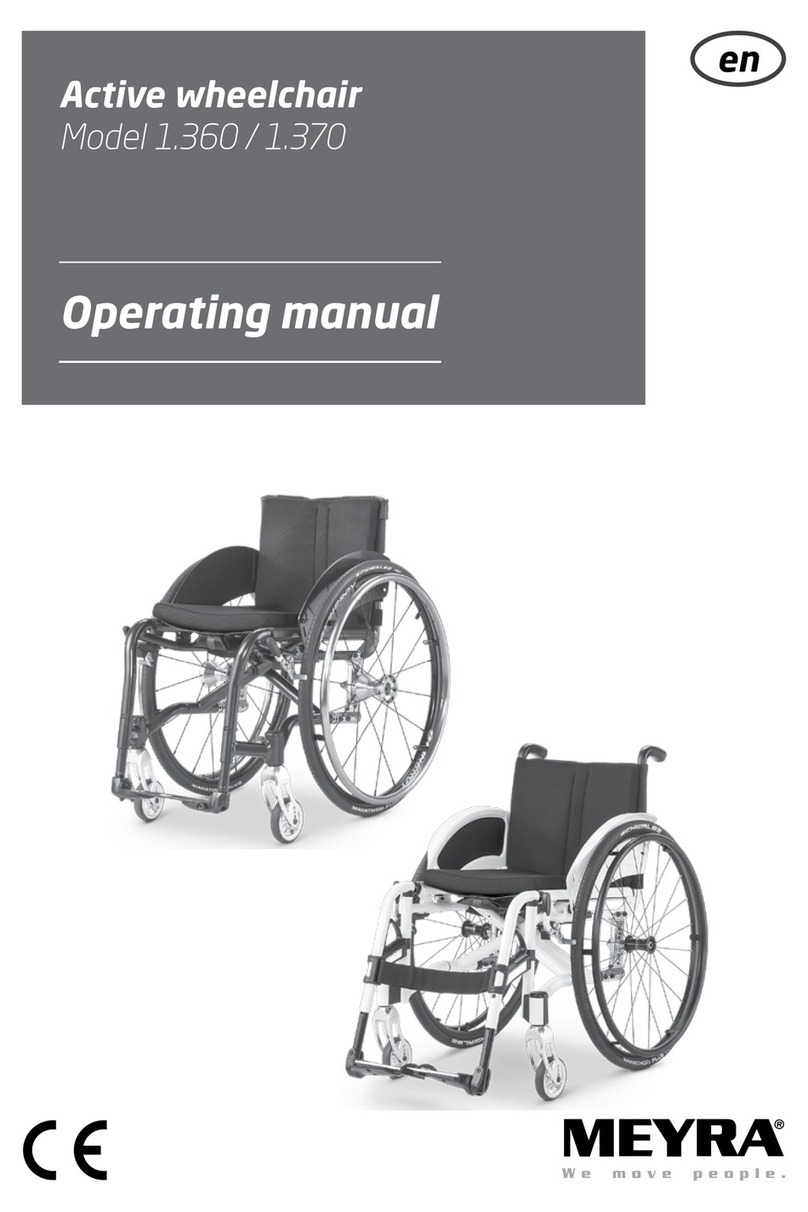
Meyra
Meyra 1.360 User manual
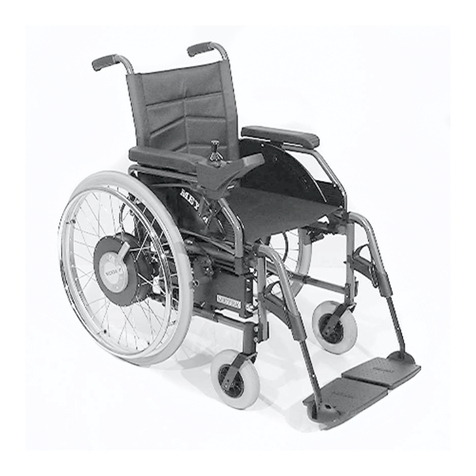
Meyra
Meyra DUO User manual
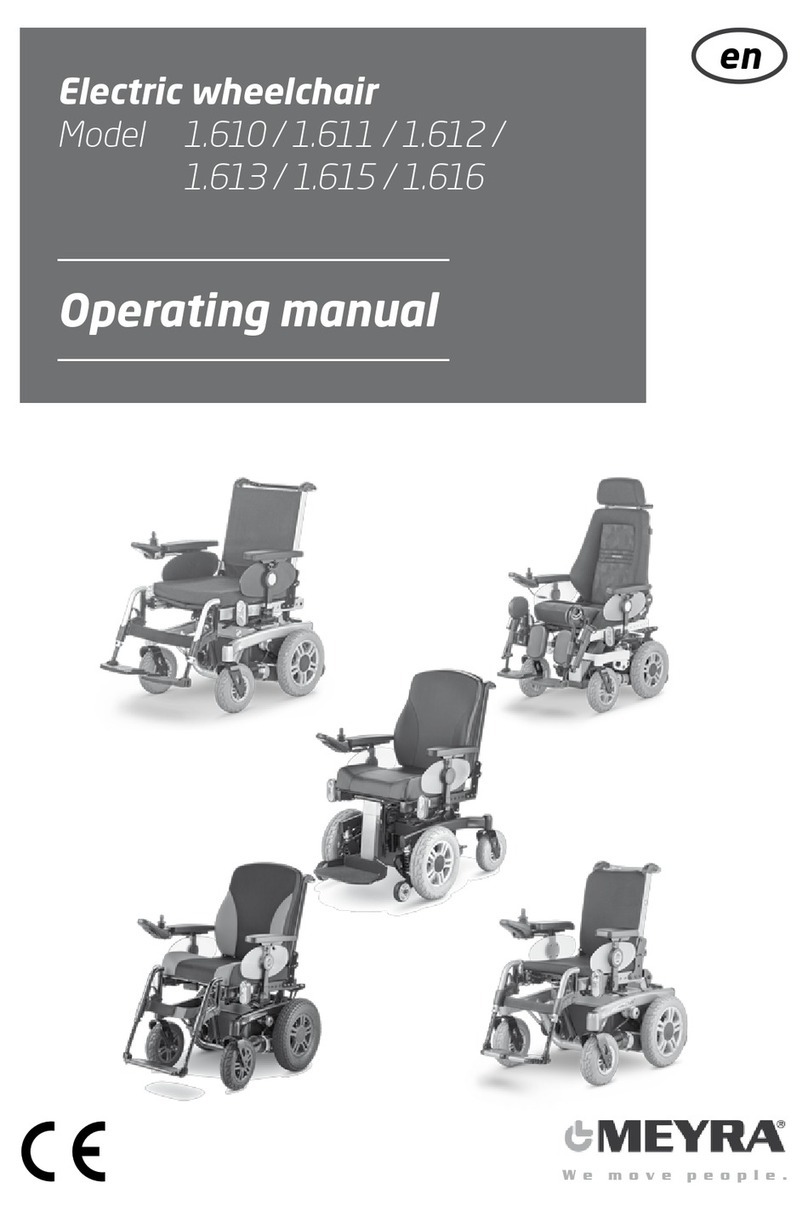
Meyra
Meyra 1.611 User manual
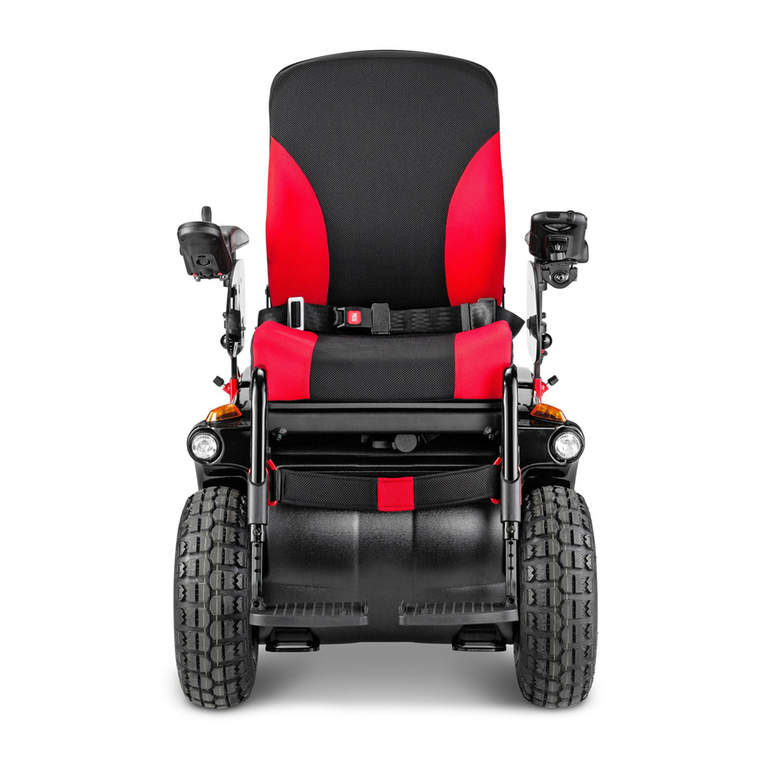
Meyra
Meyra 2.322 Manual

Meyra
Meyra 9.050 User manual
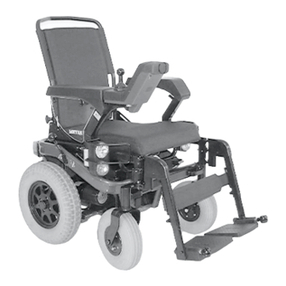
Meyra
Meyra SPRINT GT 2.593 User manual

Meyra
Meyra EUROCHAIR 2 THE ORIGINAL 2.750 User manual

Meyra
Meyra X1 User manual

Meyra
Meyra 1.620 User manual
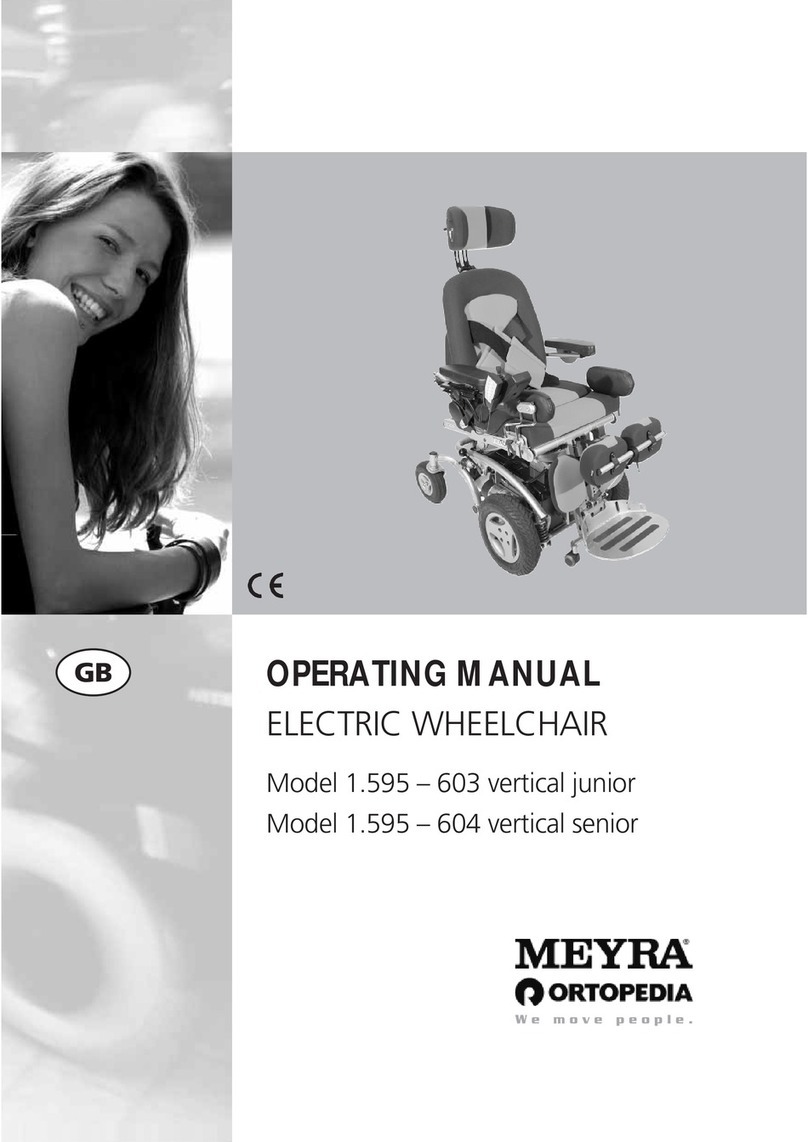
Meyra
Meyra 1.595-603 User manual
Popular Wheelchair manuals by other brands

Sunrise Medical
Sunrise Medical Quickie Freestyle M11 User instruction manual & warranty
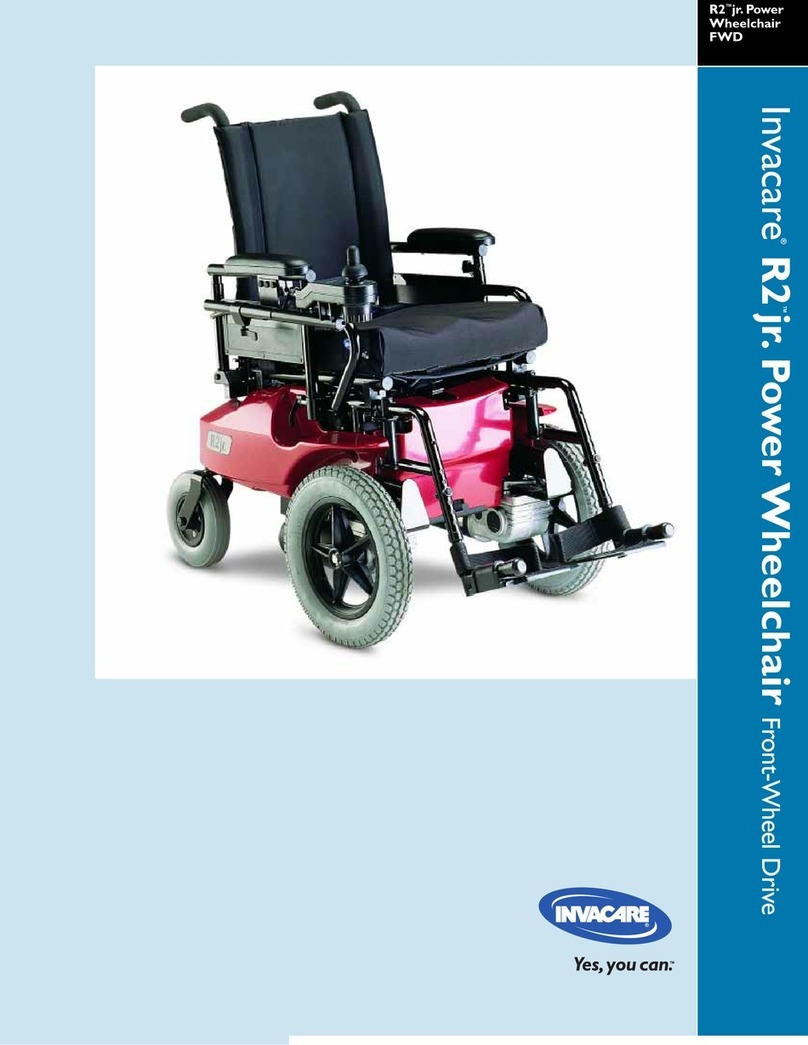
Invacare
Invacare R2 jr. Specification sheet
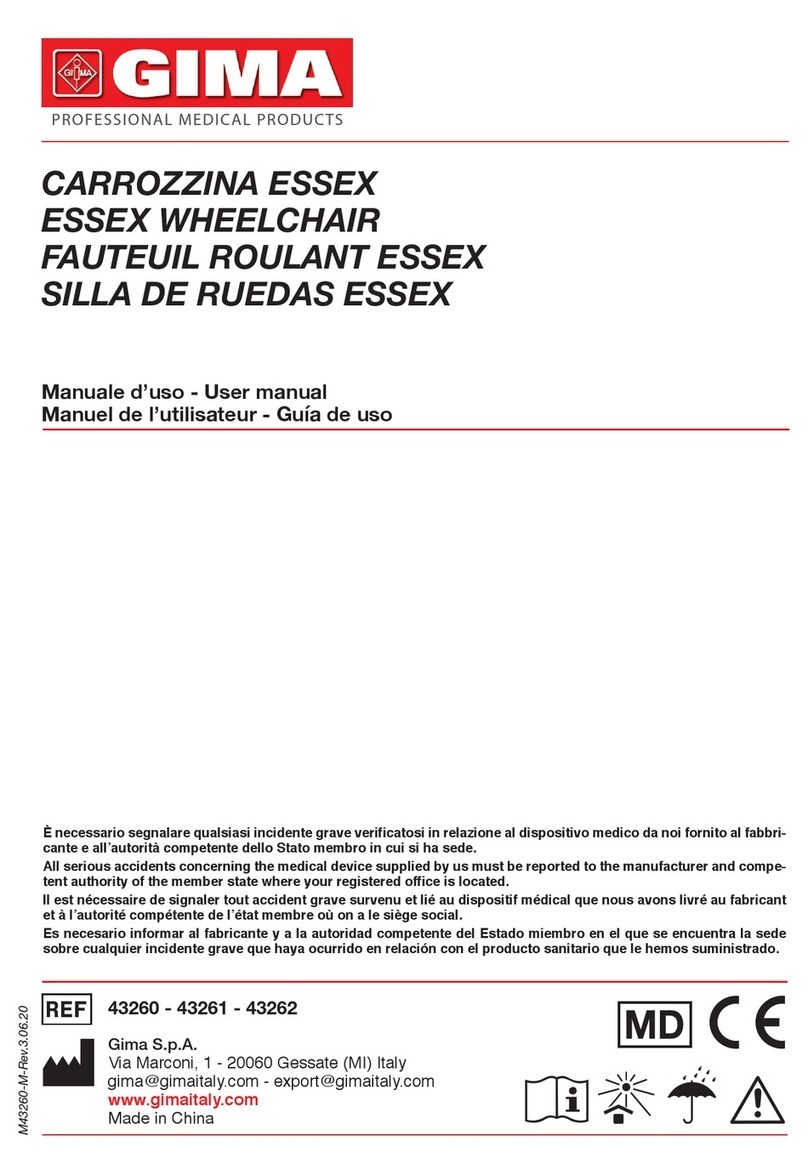
Gima
Gima ESSEX user manual
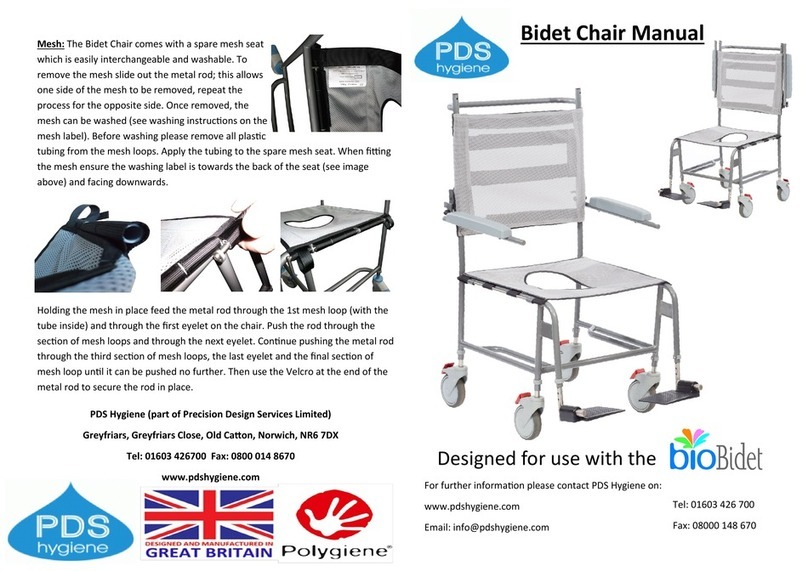
PDS hygiene
PDS hygiene Bio Bidet manual
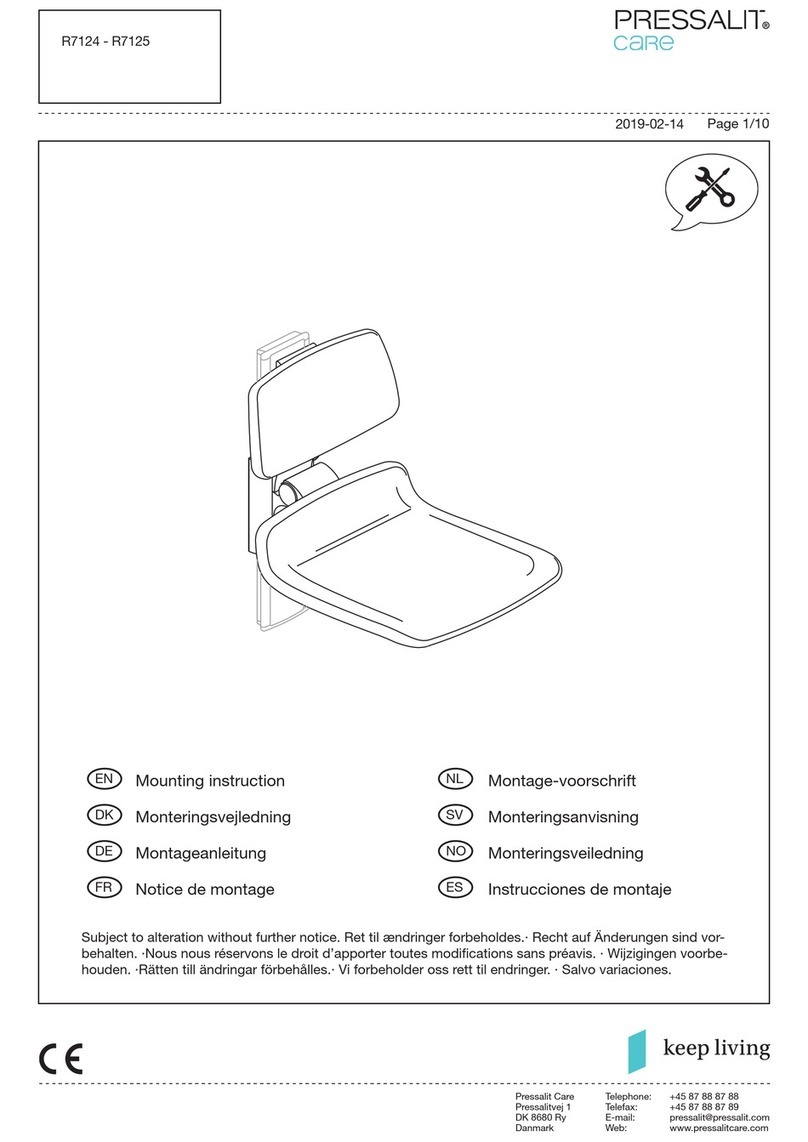
Pressalit Care
Pressalit Care PLUS R7124 Mounting instruction
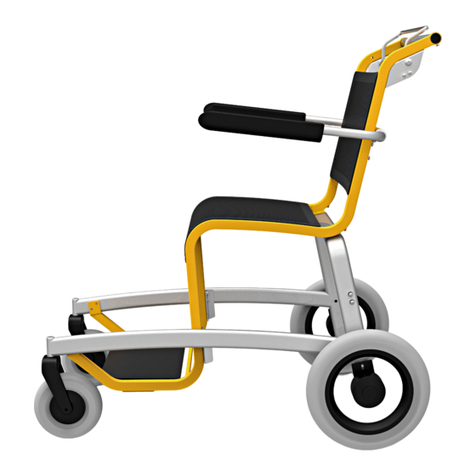
Special mobility
Special mobility Caddy3 user manual


